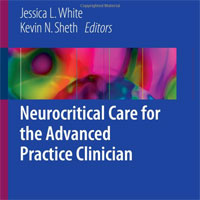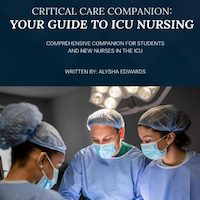Tag: ICU

Clinical Examination Skills in the Adult Critically Ill Patient
This well-illustrated book provides detailed guidance on all aspects of physical examination in patients requiring emergency or intensive care. After an introductory section covering basic principles and the recognition of... read more
How to end quiet suffering in the ICU? Identifying and treating hypoactive delirium
The duration of time a person spends in hypoactive delirium predicts higher rates of death, longer length of stay, higher costs of care, and higher rates of acquired dementia in the months and years following critical illness.... read more
Risk Factors for Mortality in Patients with Sepsis or Sepsis-associated Delirium Based on the MIMIC-IV Database
Research on the severity and prognosis of sepsis with or without progressive delirium is relatively insufficient. We constructed a prediction model of the risk factors for 28-day mortality in patients who developed sepsis... read more
Withholding Early Parenteral Nutrition on 2-year Mortality in Critically Ill Adults
Late-PN did not alter 2-year survival and physical functioning in adult critically ill patients, independent of anticipated nutritional risk. In this prospective follow-up study of the multicenter EPaNIC randomized controlled... read more
BPRI and Clinical Outcomes in Patients with Septic Shock
Use of the novel dose-effect index, Blood Pressure Response Index (BPRI) was proposed to allow rapid bedside assessment of the reactivity of septic shock patients to vasoactive drugs, as isolated MAP or VIS cannot reflect... read more
AI to Predicting Mortality Risk in ICU Patients with AKI
To address the limitations of early acute kidney injury (AKI) prediction, researchers have increasingly turned to machine learning methods. However, the success of these models hinges on the selection of relevant features.... read more
Fluid Accumulation Syndrome in Sepsis and Septic Shock
In this review, we aimed to comprehensively summarize current literature on pathophysiology, relevance, diagnosis and treatment of fluid accumulation in patients with sepsis/septic shock. Fluid accumulation syndrome (FAS)... read more
Lower or Higher Oxygenation Targets in the ICU
This study reported no overall differences comparing a PaO2 target of 8–12 kPa on mortality or days alive without life support in 90 days. Subgroup analyses suggested heterogeneity of treatment effects (HTE) in patients... read more
The Hidden Value of MRI: Modifying Treatment Decisions in C-spine Injuries
This study provides a critical evaluation of the implications of additional magnetic resonance imaging (MRI) use in the diagnosis of c-spine injuries. We have demonstrated that an adjunctive MRI extends patients' ED stays,... read more

Neurocritical Care for the Advanced Practice Clinician
By utilizing a review of case-based studies and providing concise management recommendations from leaders in the field, this book provides essential knowledge for those practicing in a dynamic specialty. In the rapidly... read more
Complex Infusion Volumes Interaction and Confounding Factors with Lactate Clearance in Septic Shock
A recent article by Ahlstedt et al. published in Intensive Care Medicine examining the impact of restrictive fluid management on lactate clearance in septic shock patients within the intensive care unit (ICU) piqued our interest.... read more
Sepsis Alert Systems, Mortality, and Adherence in Emergency Departments
This systematic review and meta-analysis demonstrated the significant association of implementing sepsis alert systems in the Emergency Departments (ED) with patient outcomes. These findings indicate that sepsis alert... read more
Treatment of Refractory Cardiac Arrest by Controlled Reperfusion of the Whole Body
This multicenter, prospective, all-comers observational study has provided preliminary data on a new approach to treat patients with prolonged refractory CA and CCPR by applying an advanced extracorporeal perfusion circuit,... read more
Antifungal Prophylaxis of COVID-19 Associated Pulmonary Aspergillosis in Ventilated Patients
This study investigated the impact of POSA prophylaxis on risk of CAPA development in mechanically ventilated COVID-19 patients receiving corticosteroids. We observed a significant variation in CAPA incidence rates among... read more
Another Perspective on Tidal Volume: From Statistics to Uncertainty
We have read with great interest the recent editorial by Pellegrini et al. Undoubtedly, now more than ever, we have begun to question the true role of tidal volume (VT) in acute respiratory distress syndrome (ARDS). As... read more
Secretomic Approach Value in COVID-19 Viral Pneumonia Among Patients With Respiratory Distress
this article presents an innovative and promising secretomic analysis to distinguish VPP patients from NV-ICU patients using combinations of protein markers. Among the identified proteins, ficolin-3 and proteoglycan-4 appear... read more

Critical Care Companion: Your Guide To ICU Nursing
Step into the dynamic and demanding world of Intensive Care Unit (ICU) nursing with Critical Care Companion: Your Guide to ICU Nursing by Alysha Edwards. This indispensable guide is crafted to support both novice and experienced... read more








